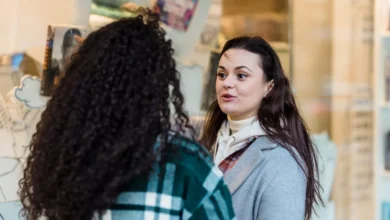Unlocking the Power of Dadiyanki: A Guide to Success

1. Introduction
“Dadiyanki” is a cherished tradition among Muslim girls, deeply rooted in cultural heritage and spiritual significance. This unique practice holds immense importance in the lives of many, serving as a symbol of identity, faith, and community.
2. Origin and Meaning
The term “dadiyanki” derives from Arabic, with “dadi” meaning grandmother and “yanki” referring to a cherished bond. It signifies the close relationship between Muslim girls and their grandmothers, emphasizing the wisdom, love, and guidance passed down through generations.
3. Traditional Practices
In traditional settings, “dadiyanki” involves intimate gatherings where grandmothers impart valuable life lessons, share personal experiences, and teach cultural customs and rituals. These sessions foster strong bonds between generations and serve as a platform for transmitting heritage and values.
4. Modern Adaptations
In today’s fast-paced world, the essence of “dadiyanki” has evolved to suit contemporary lifestyles. While the core principles remain unchanged, modern adaptations include virtual gatherings, digital storytelling, and online resources to accommodate diverse schedules and geographic locations.
5. Impact on Muslim Girls
The influence of “dadiyanki” extends beyond familial ties, shaping the identity and character of Muslim girls. Through shared stories and teachings, they gain insights into their cultural heritage, develop resilience, and navigate life’s challenges with grace and strength.
6. Social and Cultural Significance
“Dadiyanki” plays a pivotal role in fostering a sense of belonging and community cohesion among Muslim girls. It serves as a platform for cultural expression, solidarity, and mutual support, enriching their lives and strengthening bonds within the community.
7. Challenges and Controversies
Despite its cultural significance, “dadiyanki” faces challenges such as generational gaps, changing family dynamics, and cultural assimilation. Additionally, misconceptions or stereotypes surrounding Muslim traditions may lead to misunderstandings or discrimination.
8. Cultural Preservation
Efforts to preserve and promote the tradition of “dadiyanki” are underway, including community initiatives, educational programs, and intergenerational dialogue. By celebrating its heritage and values, communities strive to ensure the continuity of this cherished practice for future generations.
9. Global Awareness
Increasing global awareness about “dadiyanki” is essential for fostering cross-cultural understanding and appreciation. Through cultural exchanges, educational outreach, and media representation, the rich tapestry of Muslim traditions, including “dadiyank,” can be shared and celebrated worldwide.
10. Conclusion
In conclusion, “dadiyanki” exemplifies the profound connection between Muslim girls and their grandmothers, embodying wisdom, love, and cultural heritage. This cherished tradition transcends generations, enriching lives, fostering community bonds, and preserving cultural identity.
11. FAQs
Q1: What is the significance of “dadiyank” in Muslim culture?
“Dadiyanki” holds great significance as a symbol of intergenerational wisdom, familial bonds, and cultural heritage among Muslim communities.
Q2: How do modern Muslim girls participate in “dadiyank”?
Modern adaptations of “dadiyanki” include virtual gatherings, digital storytelling, and online resources to accommodate diverse schedules and geographic locations.
Q3: What role does “dadiyank” play in shaping identity?
“Dadiyank” provides Muslim girls with insights into their cultural heritage, fostering resilience, character development, and a sense of belonging within their community.
Q4: Are there any challenges associated with practicing “dadiyanki”?
Challenges such as generational gaps, changing family dynamics, and cultural assimilation may impact the practice of “dadiyank” among Muslim families.
Q5: How can individuals support the preservation of “dadiyanki”?
Supporting initiatives that promote intergenerational dialogue, cultural education, and community engagement can help preserve and celebrate the tradition of “dadiyanki” for future generation.
click here:NebraskaWut Capello



